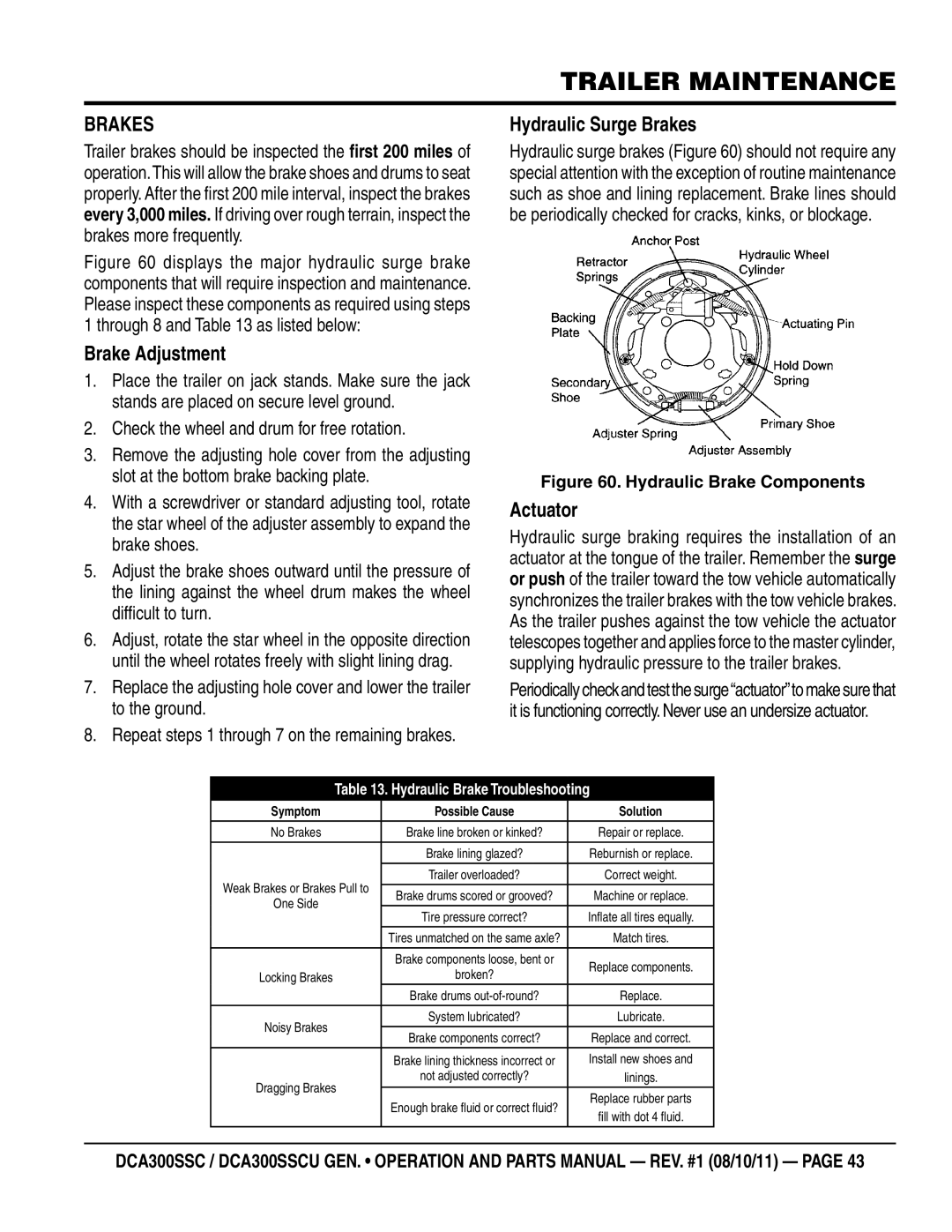DCA300SSCU specifications
The Multiquip DCA300SSCU is a powerhouse generator designed for both commercial and industrial applications, providing reliable performance in various environments. With a robust design and advanced technology, this generator stands out in the competitive field of portable power solutions.One of the main features of the DCA300SSCU is its reliable diesel engine, which provides 300 kVA of power. The generator is powered by a fuel-efficient Yanmar engine, known for its durability and low emissions, making it an eco-friendly choice for users who need sustained power without sacrificing environmental standards. This engine is designed to operate efficiently, ensuring lower operational costs over time.
The DCA300SSCU boasts impressive electrical characteristics. It is equipped with a state-of-the-art automatic voltage regulator (AVR) that ensures voltage stability, protecting sensitive electronic equipment from damage due to voltage fluctuations. Additionally, the generator's output can be customized to meet specific needs, offering versatility for various applications ranging from construction sites to events.
This model integrates advanced noise reduction technology, making it quieter than many traditional generators on the market. An enclosed canopy design significantly dampens noise pollution, an essential feature for operation in urban areas or during nighttime events. This focus on reduced sound output allows for greater flexibility in deployment locations without disturbing nearby environments.
Ease of use and maintenance are other key characteristics of the DCA300SSCU. The generator features a user-friendly control panel that makes operation straightforward, even for individuals with minimal experience. Additionally, the maintenance intervals are designed to be manageable, reducing downtime and ensuring that the generator stays operational when it’s needed most.
In terms of mobility, the DCA300SSCU is designed with a trailer for easy transportation, allowing it to be moved from one job site to another with minimal effort. The robust frame and integrated lifting points ensure stability and safety during transit.
In summary, the Multiquip DCA300SSCU is a powerful, efficient, and versatile generator that meets the demands of numerous applications. With its dependable diesel engine, advanced voltage regulation, noise reduction mechanisms, and user-friendly design, it is an ideal choice for professionals seeking a high-performance power solution.

